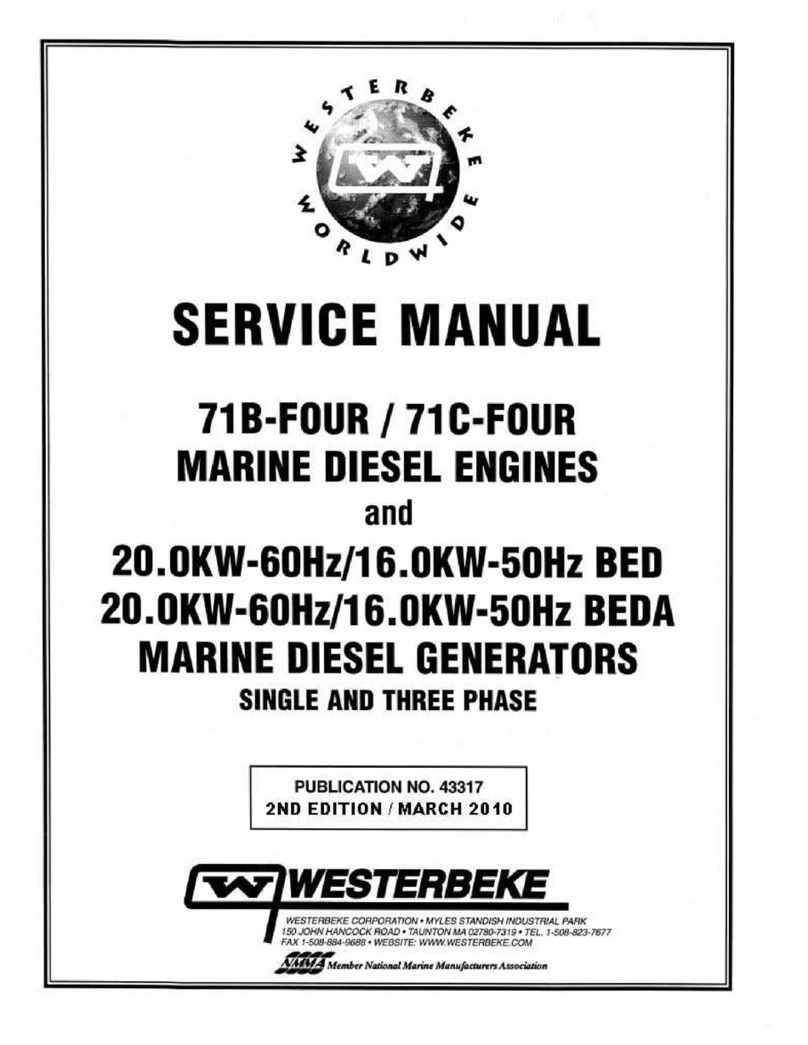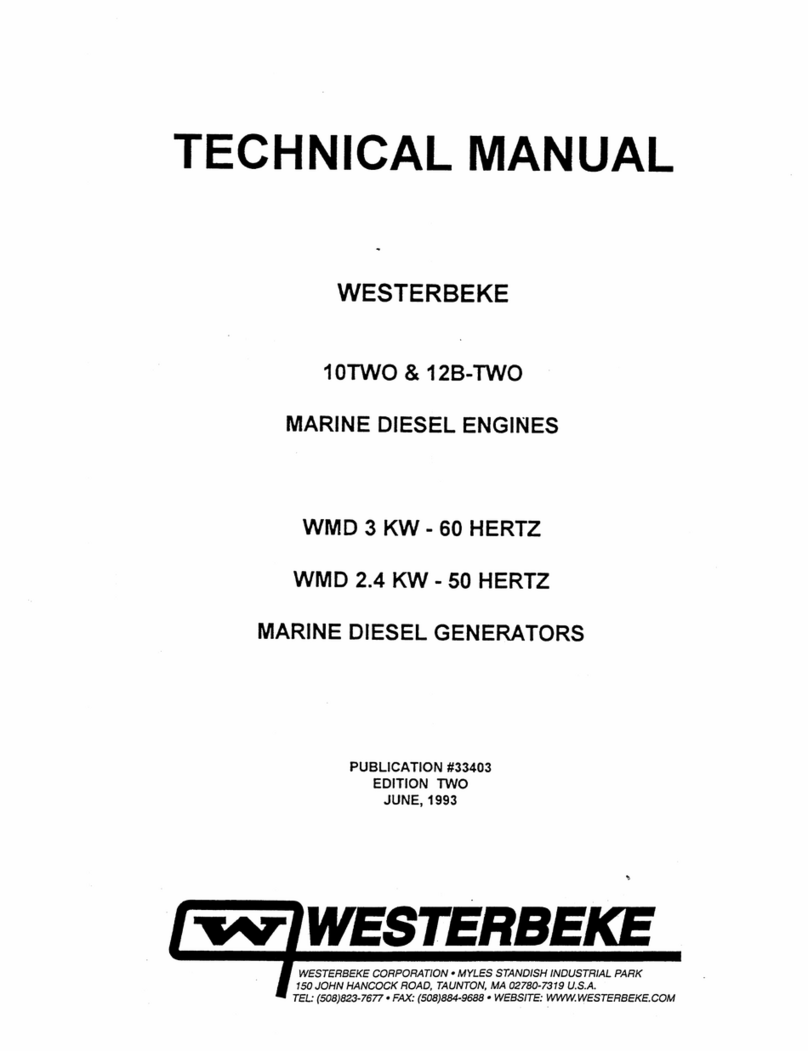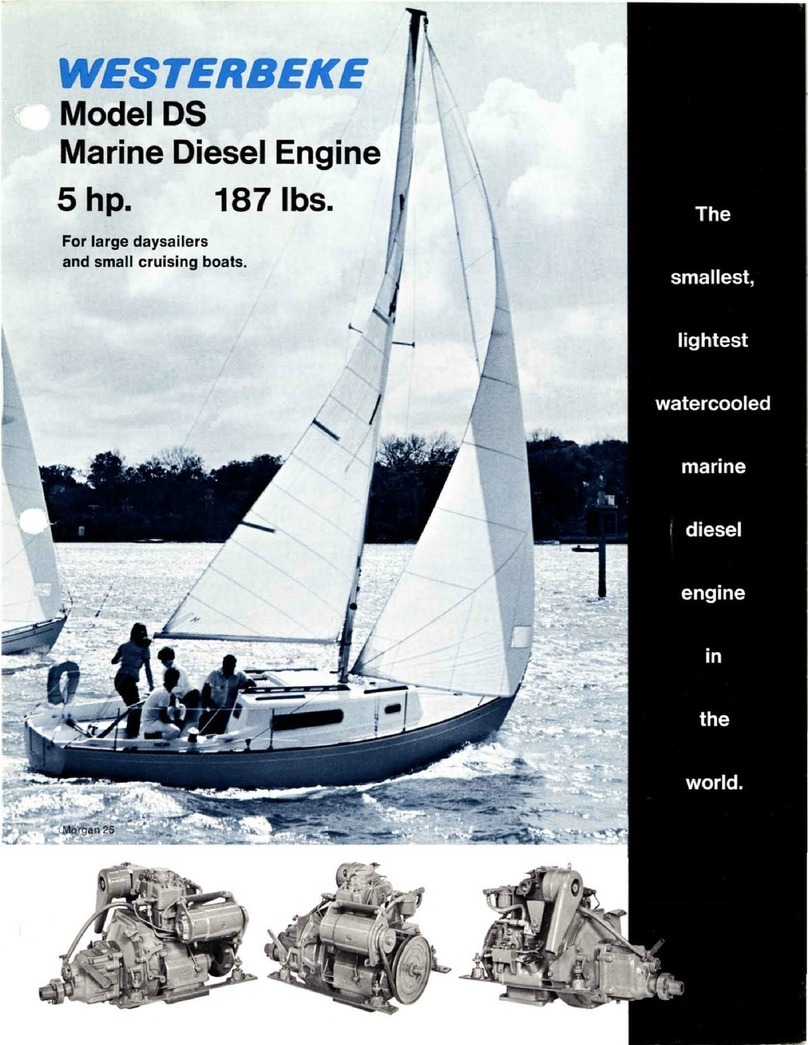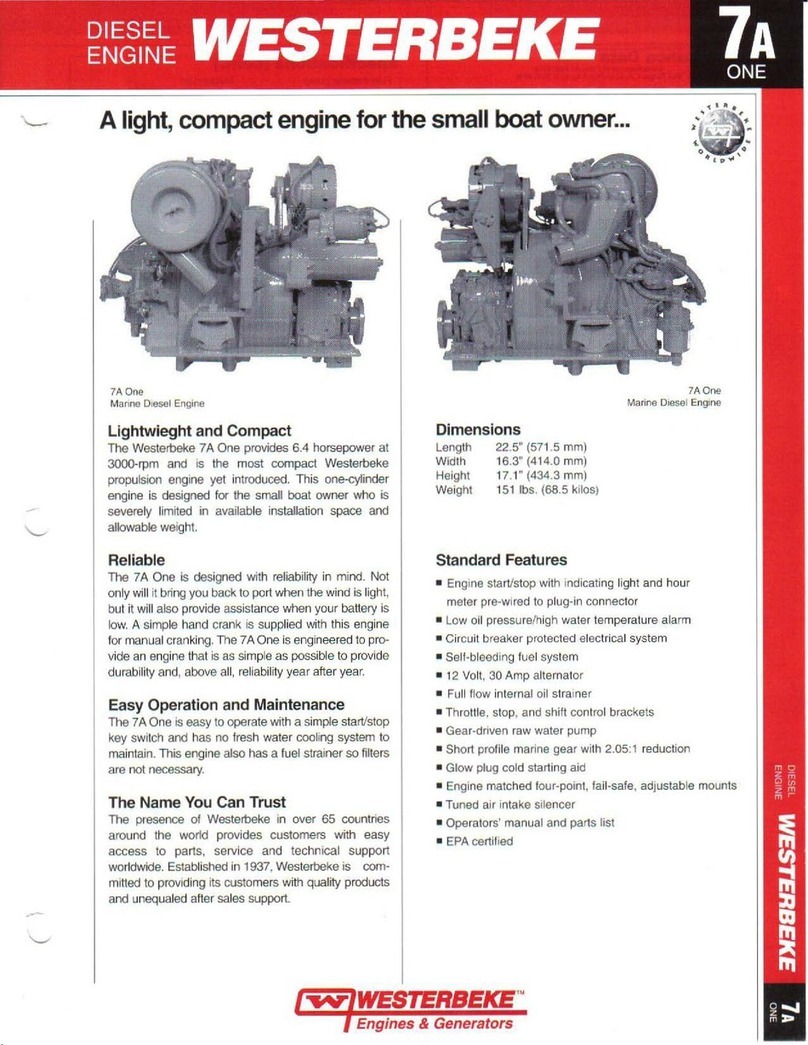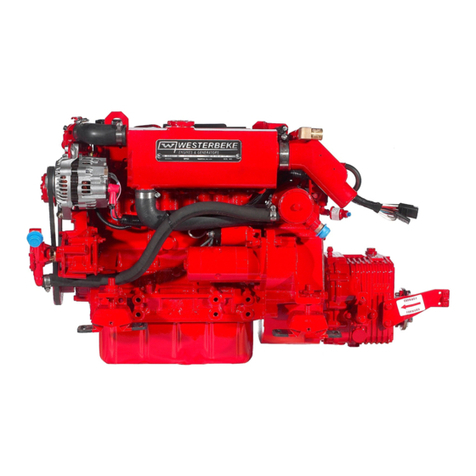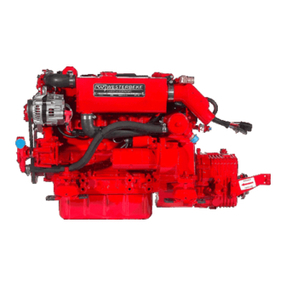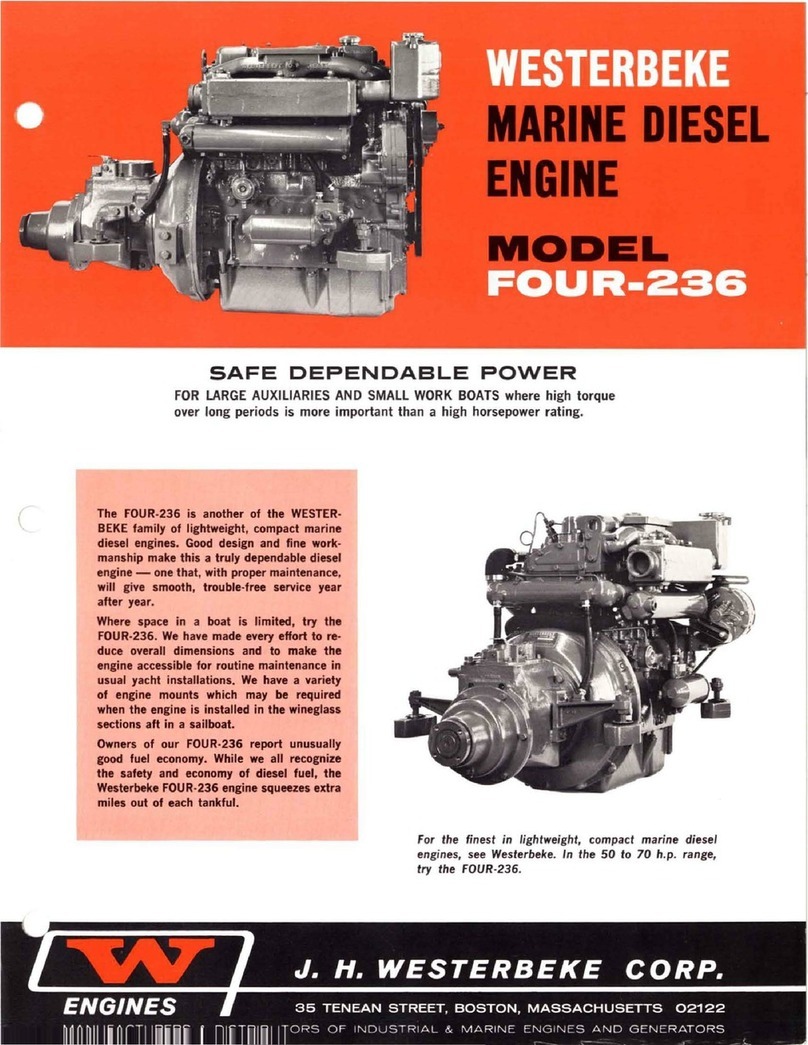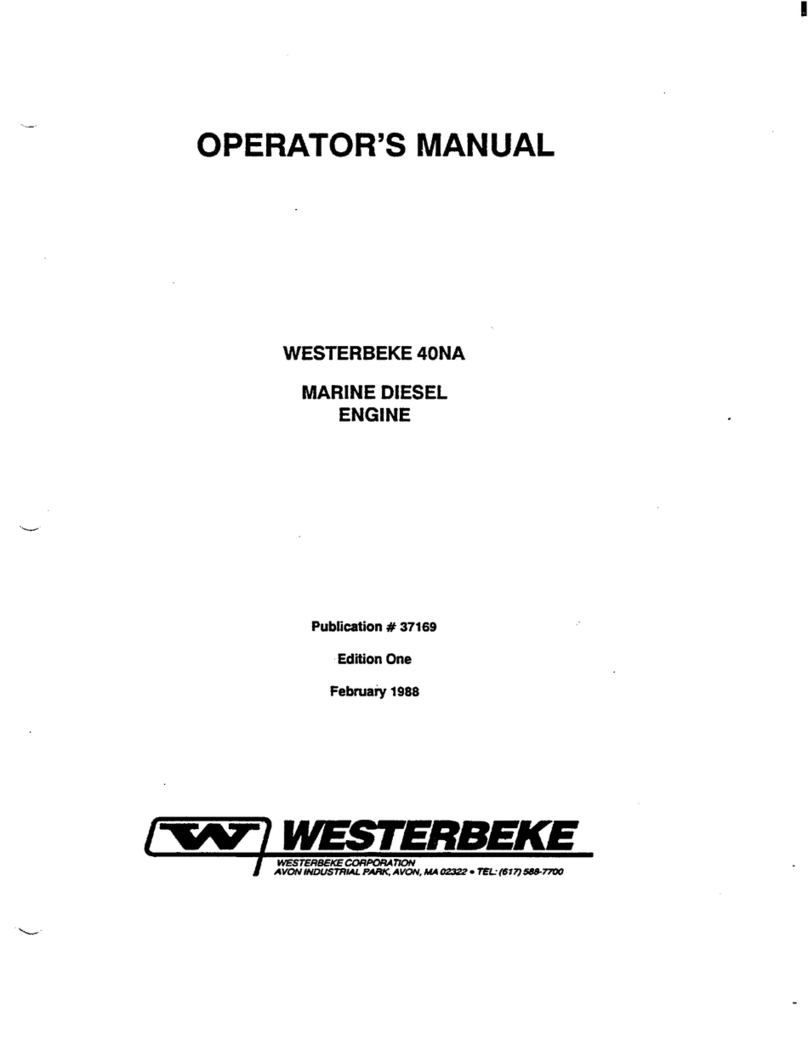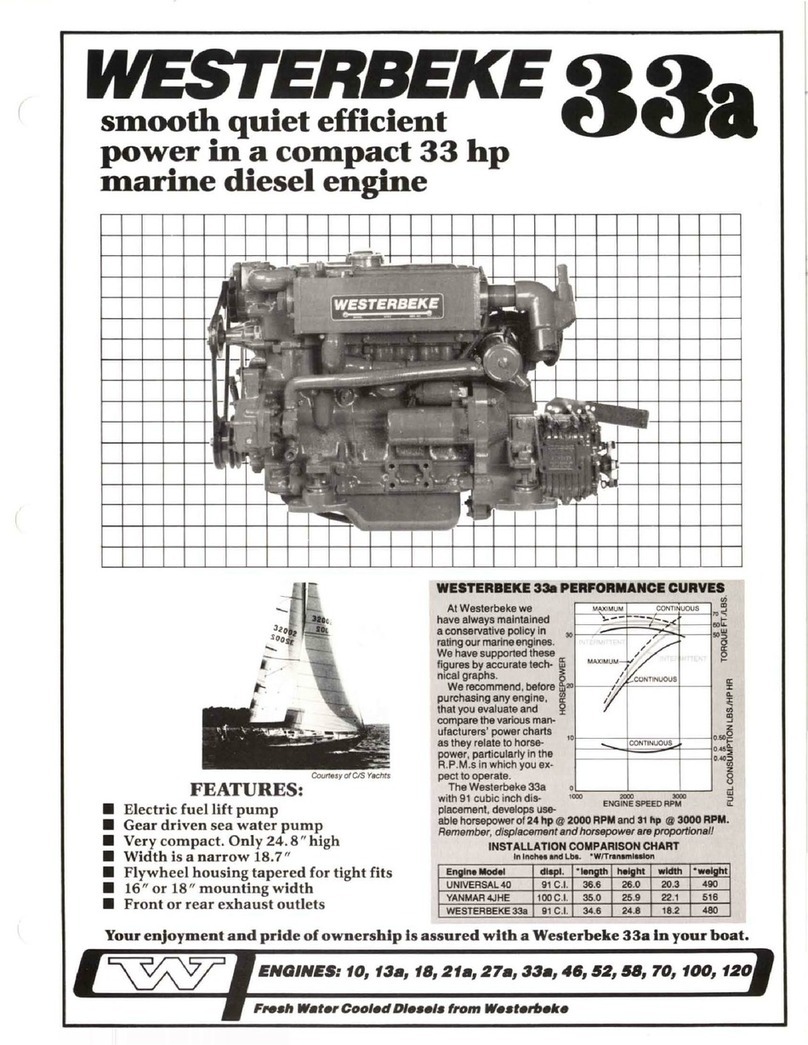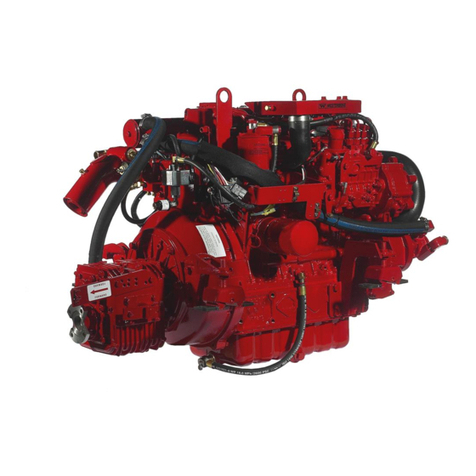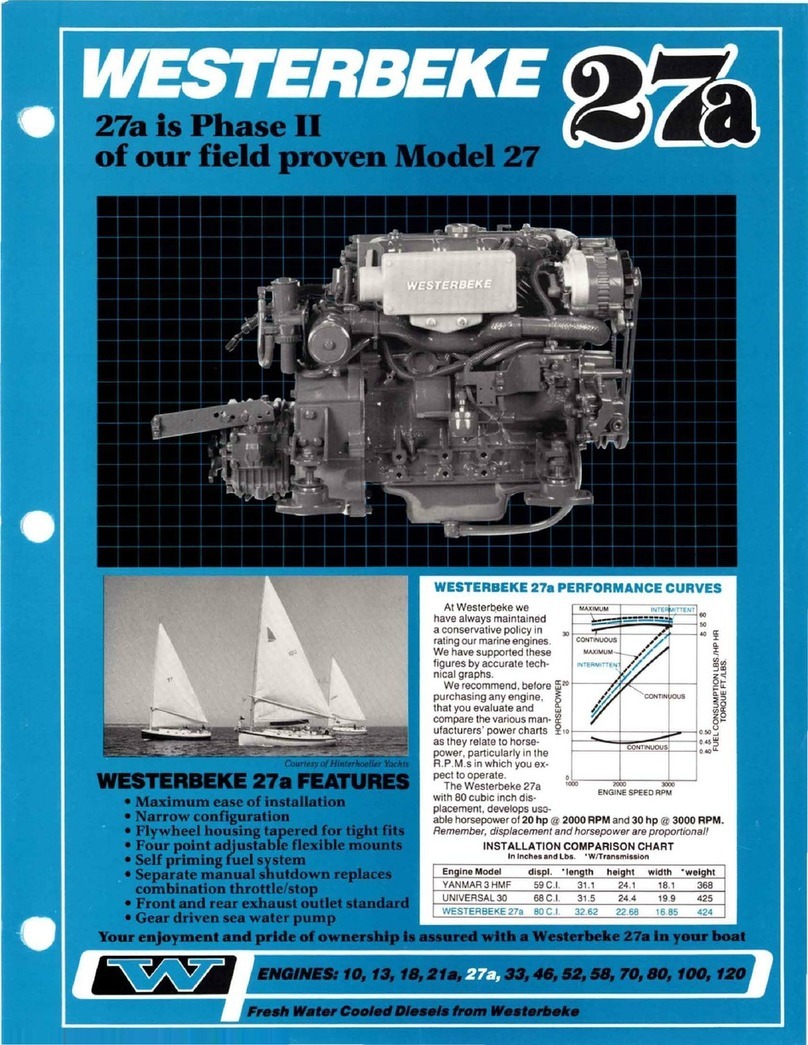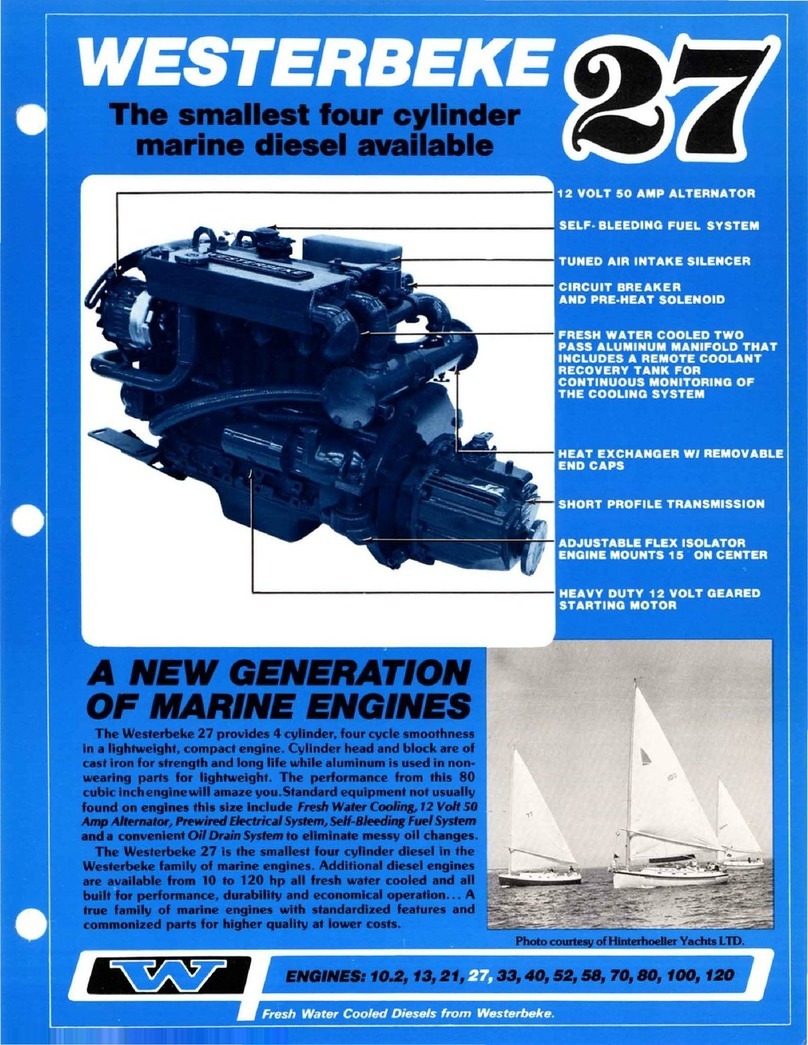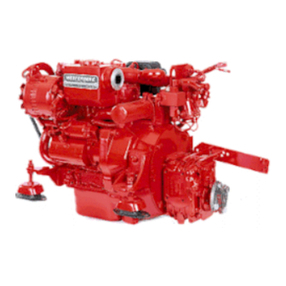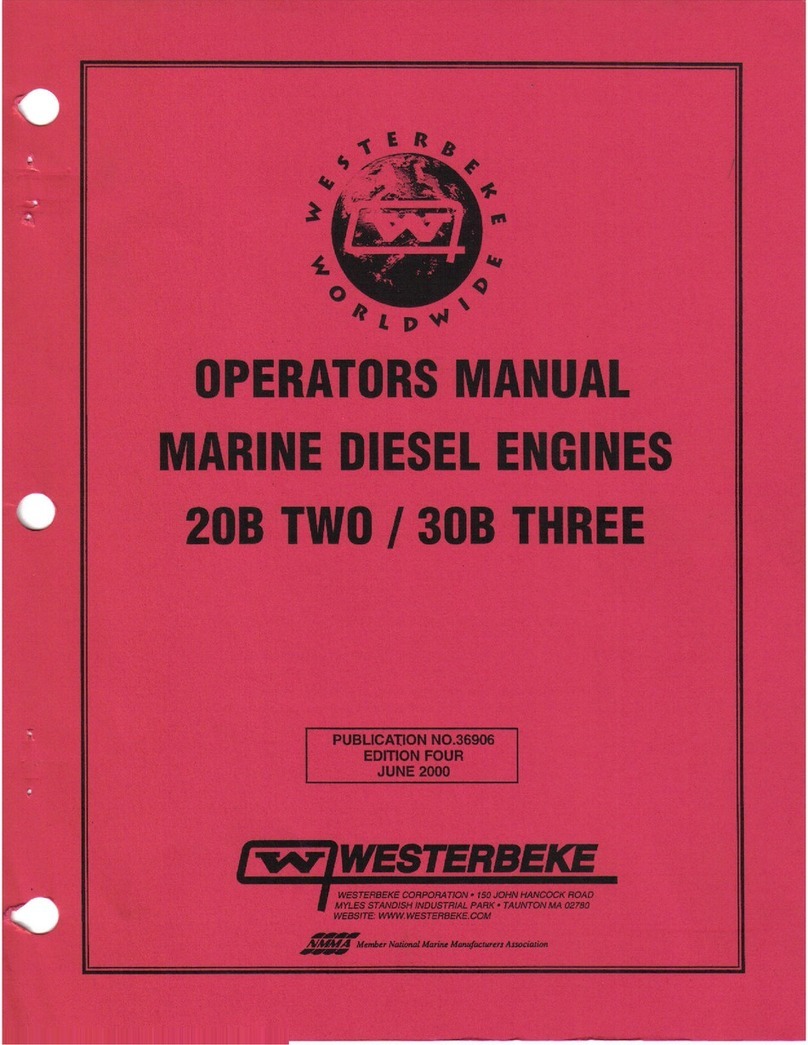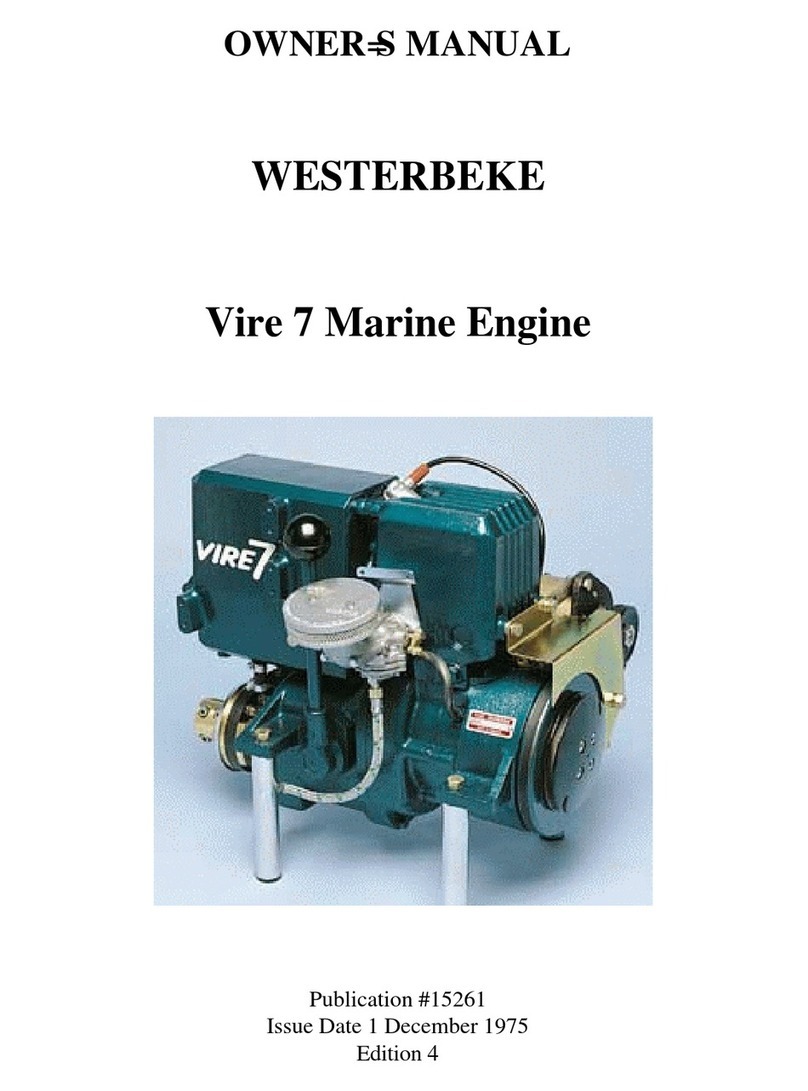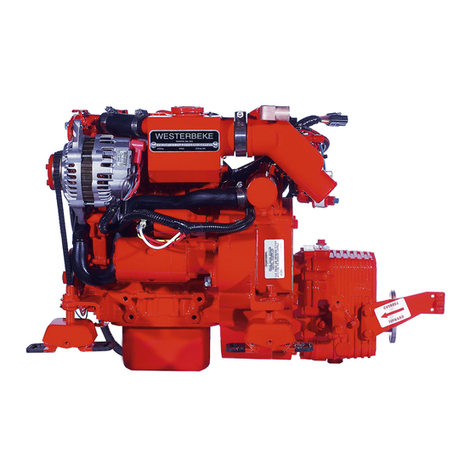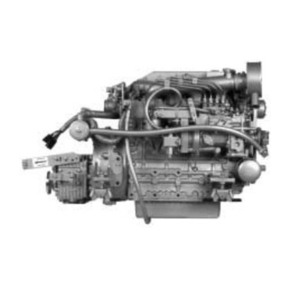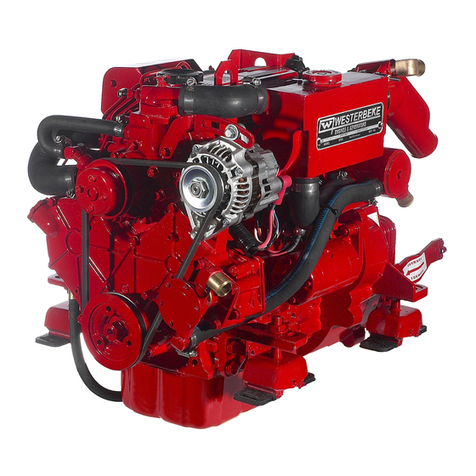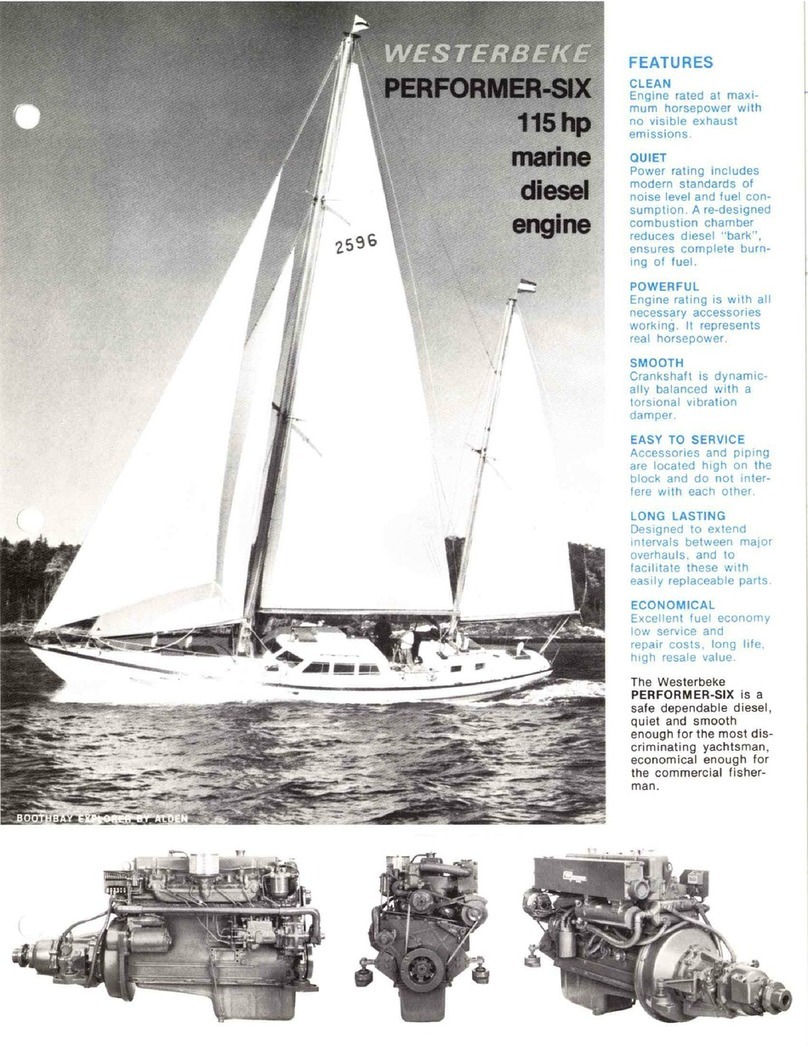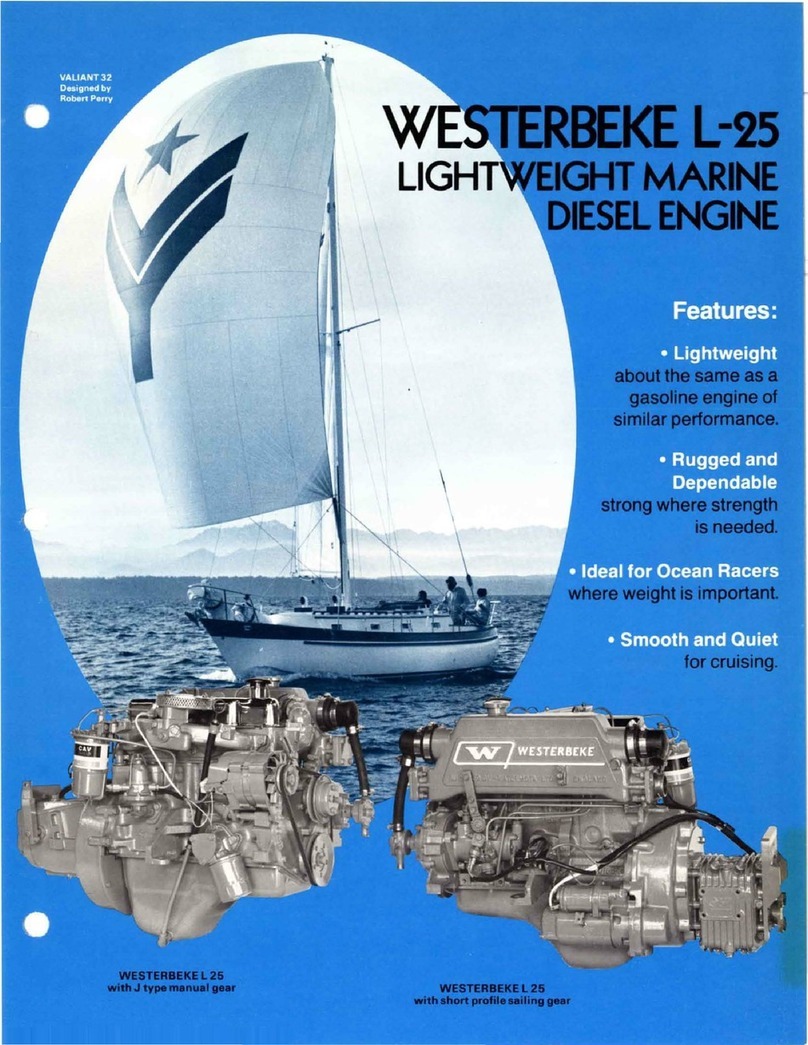
4
IMPORTANT
PRODUCT
SOFT~IARE
NOTICE
Product software of
all
kinds,
such
as
brochures, drawings, technical data,
operator's
and
workshop
manuals, parts
lists
and
parts price
lists,
and
other
information, instructions
and
specifi-
cations provided
from
sources other
than Westerbeke,
is
not within
Wester-
beke's control and, accordingly,
is
provided to
Westerbeke
customers
only
as
a courtesy
and
service.
WESTERBEKE
CANNOT
BE
RESPONSIBLE
FOR
THE
CONTENT
OF
SUCH
SOFn-/ARE,
MAKES
NO
WARRANTI
ES
OR
REPRESENTATIONS
WITH
RESPECT
THERETO,
INCLUDING
THE
ACCURACY,
TIMELINESS
OR
COMPLETENESS
THEREOF,
AND
WILL
IN
NO
EVENT
BE
LIABLE
FOR
ANY
TYPE
OF
DAMAGES
OR
INJURY
INCURRED
IN
CONNECTION
WITH,
OR
ARISING
OUT
OF,
THE
FURNISHING
OR
USE
OF
SUCH
SOFTWARE.
For
example,
components
and
sub-assemb-
lies
incorporated in
~Jesterbeke's
products
and
supplied
by
others
(such
as
engine blocks, fuel
systems
and
com-
ponents, transmissions,
electrical
com-
ponents,
pumps,
and
other products)
are generally supported
by
their
manu-
facturers with
their
own
software,
and
Westerbeke
must
depend
on
such
software
for the
des
i
gn
of
~les
terbeke •sown
product software.
Such
software
may
be
outdated
and
no
longer accurate.
Routine
changes
made
by
Hesterbeke's suppliers,
of
which
~~esterbeke
rarely
has
notice
in advance, are frequently not reflected
in the supplier's software until
after
such
changes
take place.
I~esterbeke
customers should also
keep
in
mind
the
time
span
between
printings of
Westerbeke
product software,
and
the
unavoidable existence of
earlier,
non-
current
Westerbeke
software editions
in
the
field.
Additionally,
most
Wester-
beke
products include customer-requested
special features
that
frequently
do
not
include
complete
documentation.
In
sum,
product software provided with
Westerbeke
products, whether
from
Wester-
beke
or other suppliers,
must
not
and
cannot
be
relied
upon
exclusively
as
the
definitive authority
on
the respective
product.
It
not only
makes
good
sense,
but
is
imperative
that
appropriate
representatives of
I~esterbeke
or the
supplier in question
be
consulted to
determine the accuracy
and
currency of
the product software being consulted
by
the
cus
tomer.
